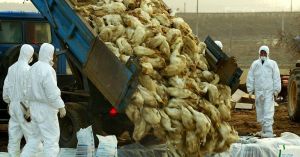A civilian drone crashed with a Quebec water bomber plane battling the Palisades Fire earlier this month, resulting in significant damage to the aircraft and leading to the grounding of firefighting operations for nearly half an hour. Peter Tripp Akemann, 56, from Culver City, California, has pleaded guilty to operating the drone recklessly.
On January 9, 2025, Akemann flew his drone from the top of a parking garage located on Third Street Promenade, Santa Monica, toward the wildfire zone. The drone traveled more than 1.5 miles before it collided with the water bomber, which belongs to the Quebec government and assists aerial fire suppression. The impact left a sizeable hole—measuring approximately 7 by 14 centimeters—in the plane's left wing.
Christopher Thomas, spokesperson for Cal Fire, expressed frustration over the incident, stating, "This makes me very angry. It is extremely irresponsible and people could have been killed." Fortunately, the pilots managed to land the damaged aircraft without incident, but the event delayed firefighting efforts, underscoring the dangerous behavior of unauthorized drone operation during emergencies.
Akemann's motivations for flying the drone remain unclear; he reportedly sought to observe the damage caused by the fire. Still, his actions have sparked outrage among authorities. Akil Davis, Assistant Director of the FBI's Los Angeles field office, condemned the negligence, asserting, "Lack of common sense and ignorance of your duty as a drone pilot will not shield you from criminal charges." He emphasized the need for drone operators to be aware of regulations, especially when they interfere with emergency services.
Despite facing possible prison time of up to one year, Akemann’s plea agreement resulted in no incarceration, provided he completes 150 hours of community service related to wildfire relief and pays around $65,169 US as restitution for the damages incurred. The penalties highlight the seriousness with which federal authorities view breaches of drone laws, especially amid increasing wildfires fueled by dry Santa Ana winds across Southern California.
Authorities are clear on their stance: flying drones near active firefighting operations is illegal and poses significant risks. The FAA has not authorized anyone outside firefighting operations to use drones during the Palisades Fire, reiterate the close connections between air and ground operations during such crises. Federal regulations forbid drone flights near active fires, and violators face fines or imprisonment.
This incident followed the outbreak of the Palisades Fire, which began on January 7, resulting in substantial destruction, including damage to nearly 8,000 homes and infrastructure and at least 12 confirmed fatalities. The blaze was fueled by exceptionally dry conditions and the Santa Ana winds, making emergency response difficult. Fire officials worked against the clock to contain the fire, which has scorched approximately 36 square miles and was reported to be 98% contained as of recent updates.
The consequences of Akemann’s drone operation extend beyond the immediate incident. The Los Angeles County district attorney has issued firm warnings about drone usage during emergencies. District Attorney Nathan Hochman emphasized the legal repercussions for those who choose to disregard flight restrictions, stating, "If you’re thinking it’s fine to send a drone up for your own amusement… you will be arrested, prosecuted, and punished to the full extent of the law." This stern message aims to deter future lawbreakers and protect the pivotal work of firefighting crews.
Investigations continue, not only on the drone collision but also concerning the origins of the fire itself, which has forced thousands of evacuations and disrupted lives across the affected regions. The dual-wildfire challenges have strained community resources and emergency services, and there are calls for accountability on how notifications were handled during the crisis, especially for residents who received inadequate warnings.
Given the growing number of wildfires and the potential for fatalities, the intersection of drone usage and emergency management becomes increasingly significant. First responders are under constant pressure to act swiftly; any delay could lead to greater devastation, making strict adherence to regulations even more urgent.
With the threat of wildfires ever-present, particularly during peak wind seasons, both the community and firefighters are reminded of the importance of responsible drone operation. Violations can threaten lives, compromise safety protocols, and hinder efforts to battle life-threatening infernos. The incident serves as both cautionary tale and clarion call for more stringent enforcement of drone regulations.



